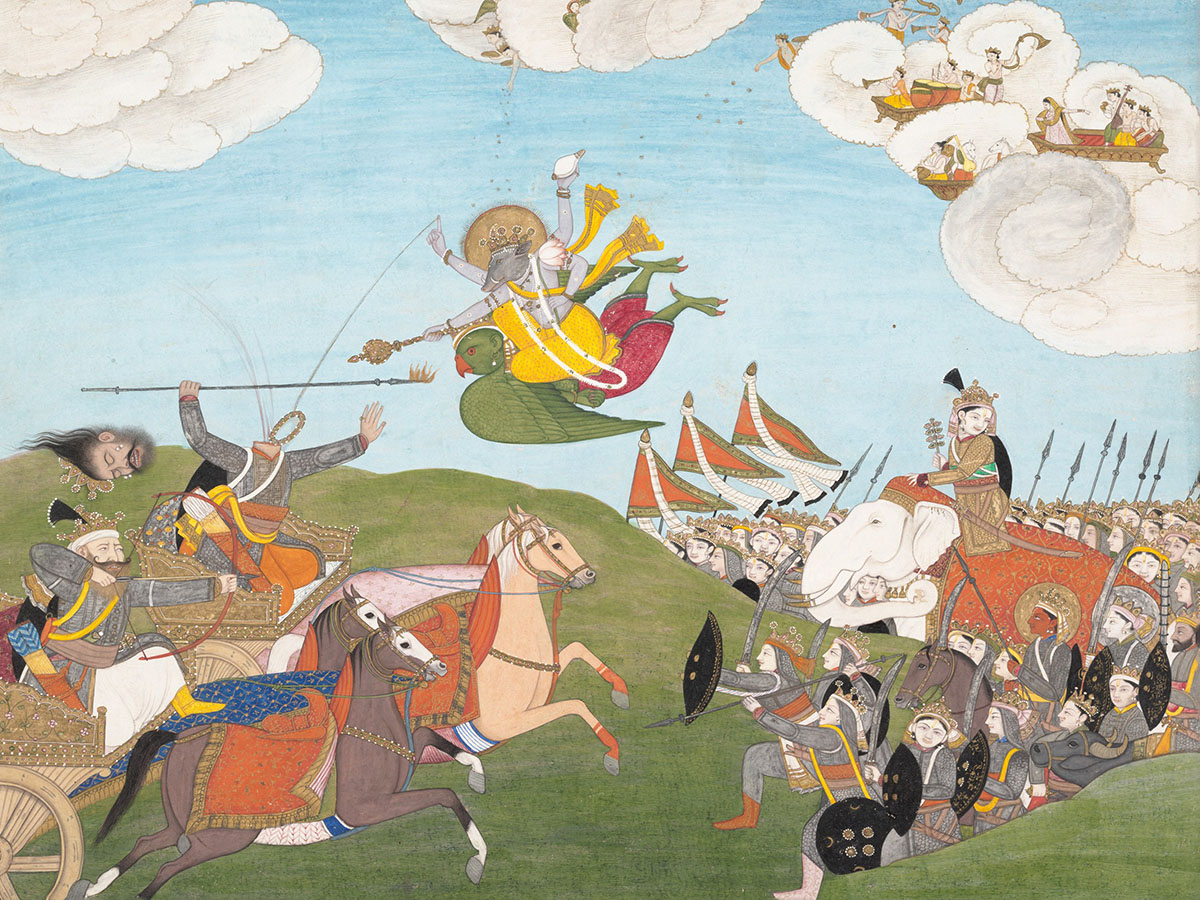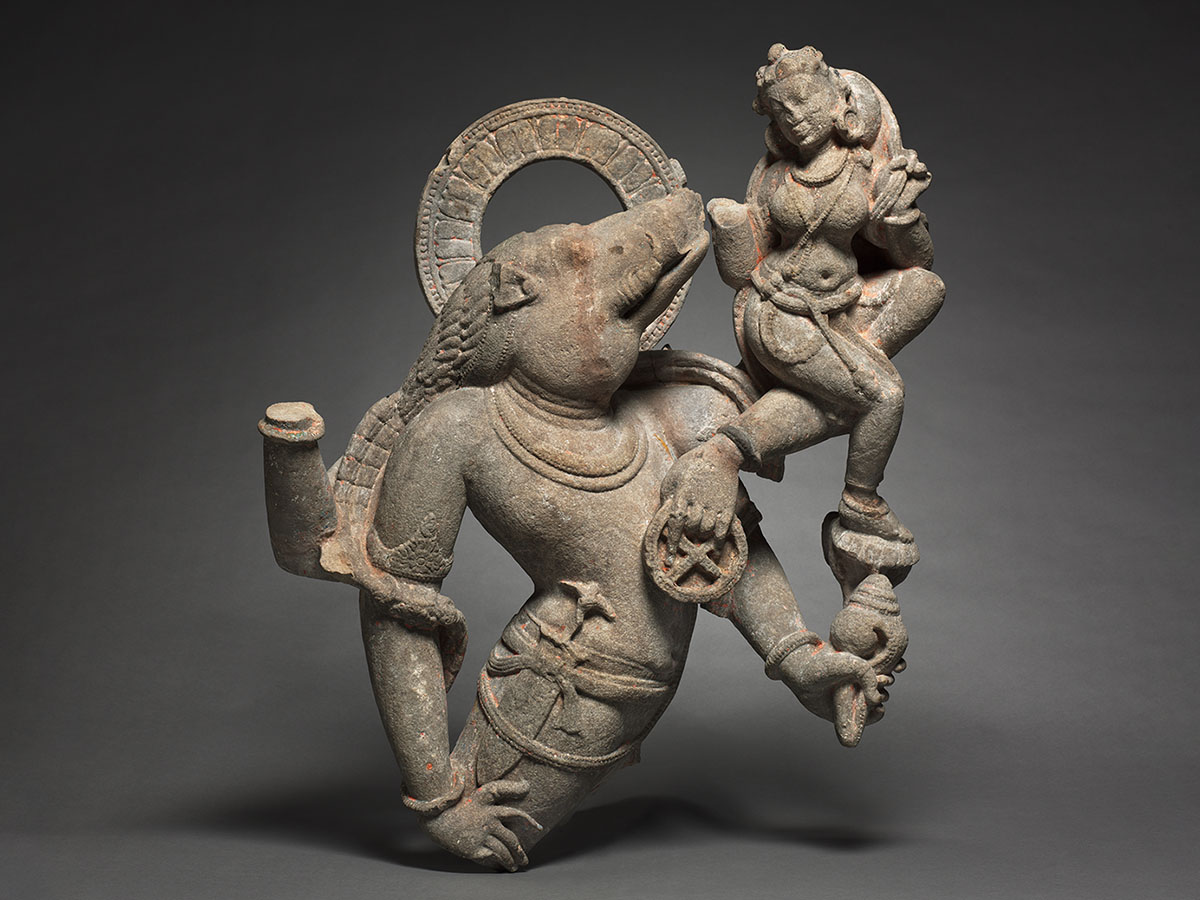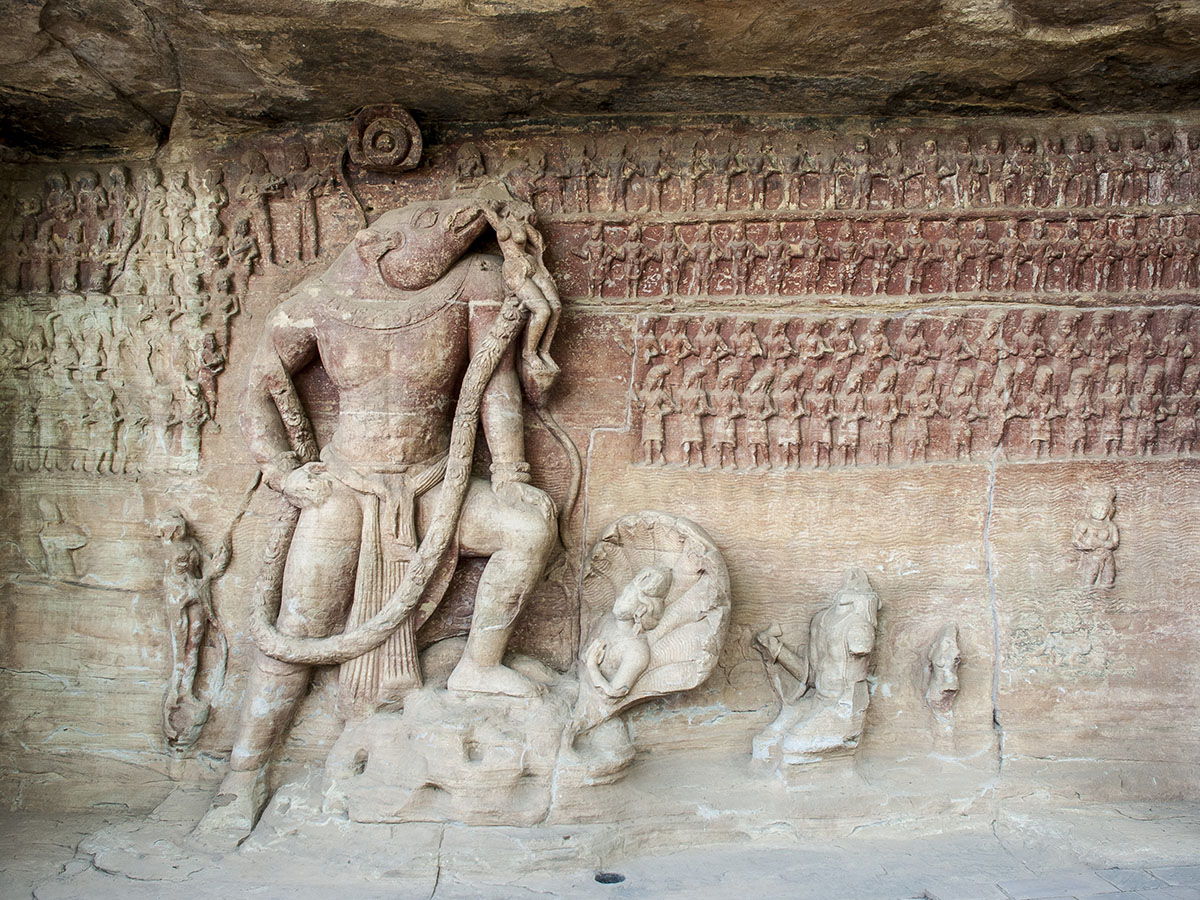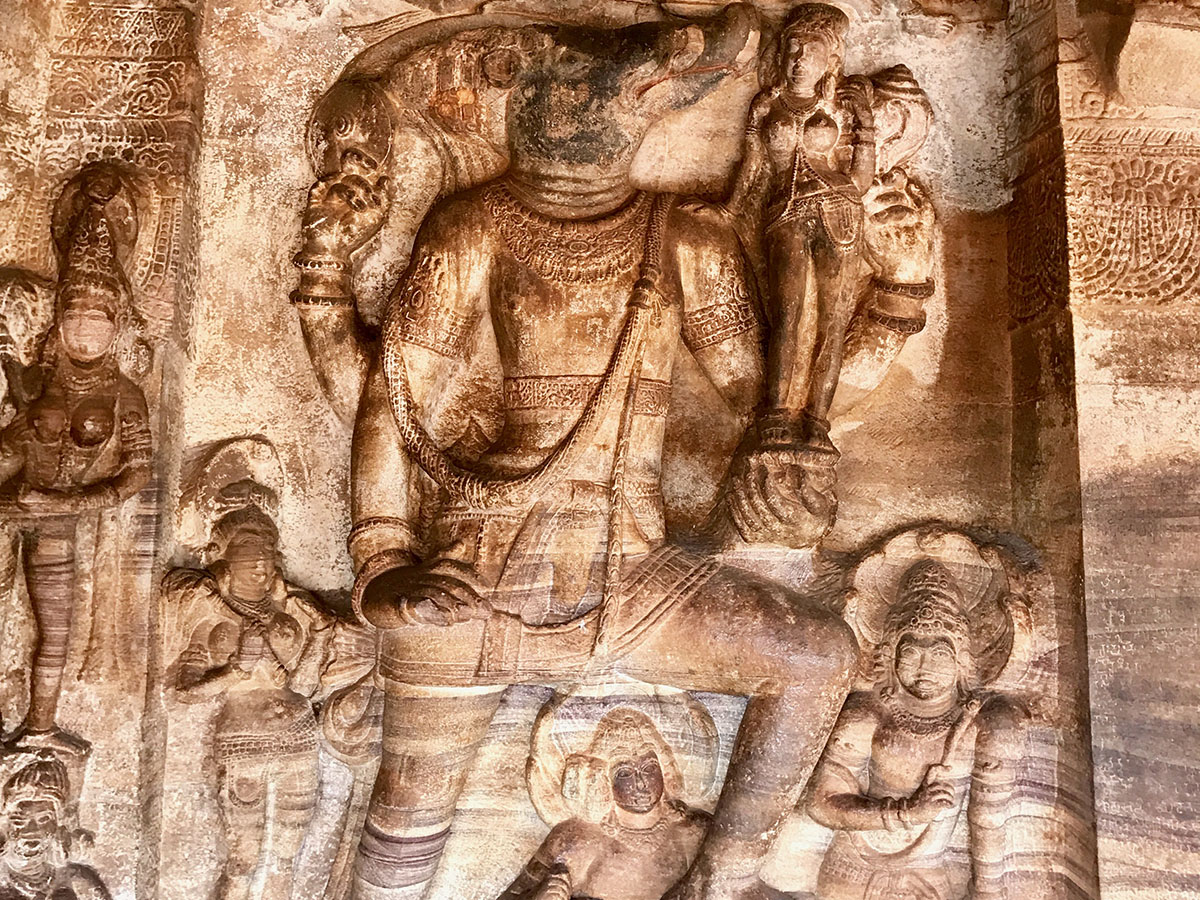PERSPECTIVES
Vishnu as Varaha: The Divine Boar From the Medieval to Modern
Gods watch in awe, the oceans shake, and a great tusked snout rises from the waters followed by the deity with the head of a boar and the body of a man. One of his arms gently cradles the goddess Prithvi (Earth), bearing her towards the skies; a heavy, fragrant garland sways around his shoulders, as his legs trample a writhing serpent. Flowers fall from the heavens as Varaha, the Man-Boar incarnation of Vishnu, defeats evil and begins a new cycle of time.
Throughout the early medieval period in South Asia, c. 500–1100 CE, sculptures depicting this scene were produced across the subcontinent by royal courts. Among the earliest and most dramatic examples can be seen in the caves at Udayagiri, Madhya Pradesh, commissioned by the Gupta dynasty of the Gangetic Plains. Udayagiri was an important ritual centre for the Guptas and was associated with measuring time. Here the Gupta emperor Chandragupta II commissioned a large sculpture of Varaha trampling a serpent or Naga. An inscription nearby suggests that the scene was meant to commemorate the emperor’s victory over various chieftains of Naga polities in central India. Varaha probably represents Chandragupta II — who, it is implied, began a new cycle of time through his prowess just as the god did.
This analogy of the king as Varaha rapidly spread through South Asia. Though the Guptas had produced the image in response to their political challenges, the mythology of Varaha was sufficiently universal for it to be transposed to new political contexts. According to legend, Varaha had rescued the earth goddess from the primordial flood and defeated the demon Hiranyaksha. The god was then believed to have married the goddess, and this rescue inaugurated a new era.
Deccan dynasties produced some of the most remarkable examples of the identification of rulers with Varaha. The Early Western Chalukyas commissioned images of the divine boar from as early as the sixth century CE; the boar was their dynastic emblem, and verses to Varaha inaugurated their land grant inscriptions from the mid-seventh century onwards. The Chalukyas even adopted a unique imperial title identifying themselves with Varaha. This title, Sri-Prithivi-Vallabha, translates roughly to “The Fortunate Lord of the Earth” or to “Fortune’s Favourite and Earth’s Beloved”: as a form of Vishnu, Varaha is married both to the goddess of fortune (Sri) and the goddess of earth (Prithvi). The implication is that the Chalukya kings, like Vishnu, had a husband’s rights over both fortune and land, and could distribute it to their vassals as they saw fit. As the Chalukyas ruled the first imperial polity in present-day northern Karnataka, such a claim — with its links to royal deities — helped establish their legitimacy and distinguish them from their rivals.
Chalukya sculptures of Varaha had much thinner limbs than their Gupta predecessors and were more ornately decorated with jewellery. They also tend to have four arms, with the two rear arms bearing a conch shell and discus — the most recognisable emblems of Vishnu. The Chalukya Varaha wears a towering golden crown and necklaces of precious gems and pearls and usually bears a lotus in his hand upon which Prithvi stands. Examples of this scene can be seen in all the dynasty’s major centres, but especially in the cave temples at Vatapi (present-day Badami) and the structural temples at Aryapura (present-day Aihole).
The image of Varaha rescuing Prithvi continued to be used for centuries after; every major imperial dynasty used it in the medieval period, including the ninth-century Rashtrakutas of Manyakheta (present-day Malkhed, Karnataka), the twelfth-century Chaulukyas of Anahilavada (present-day Patan, Gujarat) and the thirteenth-century Hoysalas of Dvarasamudra (present-day Halebidu, Karnataka). It then gradually lost its preeminence as a royal emblem in the early modern period, which saw the evolution of new alliances between religious centres (particularly those dedicated to the god Krishna) and royalty.
However, the divine boar continued to evolve in art, especially in painting. In the early modern period, North Indian courts produced several Varaha images, often as parts of Bhagavata Purana manuscripts. Unlike medieval depictions, these usually depict the earth not as a goddess but as a flat surface, usually bearing some buildings. Early modern paintings also reveal a deep engagement with the imagery of the Persian world: Varaha is usually shown fighting a demon — depicted as fantastical beasts with bulging eyes, fangs, horns, tails and claws — rather than a naga. In one striking eighteenth-century depiction, he rides a parrot and leads a divine army against a general whose identity is unclear.
Modern images of Varaha generally depict the earth as a sphere. An example of this can be seen in an oleograph produced by the Raja Ravi Varma Press in the 1930s, prominently featuring India at the centre. It is possible to read this as an allusion to Raja Ravi Varma’s own convictions and attempts to build a unifying visual idiom for twentieth-century nationalism. It thus seems that, over time, the image of the divine boar came full circle. From an emblem of kingship as salvation, suggesting the inauguration of new eras by medieval kings; to gradually losing political meaning through the early modern period while its visual form continued to evolve; to finally becoming an emblem of resurgent nationalism and pan-South Asian patriotism. The evolution of Varaha is a potent element in understanding the histories — artistic and otherwise — of South Asia.








